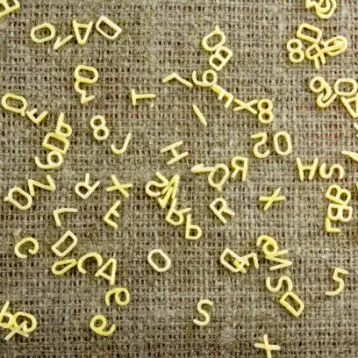|
A little over a hundred years ago, no one would have taken seriously the idea of exploring the possibility to travel back and forth through time. Only after Albert Einstein published his theory of relativity did scientists begin to pay attention to this field. According to the theory of relativity time is “fluid,” or flexible: time can slow down or accelerate, as well as condense or extend like a spring. And if time is so flexible, perhaps it can also be bent, or reversed? Of course, intuitively, time travel seems to most of us like an unrealistic and impossible idea, belonging only in science fiction books, but anyone who ever studied quantum theory knows how bizarre the behavior of small particles such as electrons are. Let’s take, for example, the phenomenon called “tunneling”: according to the quantum theory, if we close an electron in a sealed container it might suddenly appear outside the container, just like that; pass through the walls of the container as if they didn’t exist. Tunneling is also an absurd idea, but computer chip designers must take it into consideration daily as chip dimensions get smaller and smaller.
|
Physicist Niels Bohr once said that if a person doesn’t find the quantum theory weird, surely he doesn’t understand it. Of course, no physicists study time travel; they all research “closed timelike curves,” which are (of course…) something completely different. If you declare that you are trying to build a time machine, you will find that there is only one substance in the universe that can travel faster than light, and that is the letter from the administration of your university informing you that your research funding has been discontinued.
Currently, time travel research is performed only by theoretical physicists. We therefore cannot honestly expect a real functional time machine any time soon – after all, these are theoretical physicists. Even if they had the ability to invent a time machine, they would have probably crashed it while trying to get it out of its parking space.
|
Throughout the years several ideas have been raised concerning time travel. Some scientists believe flying at a high velocity in the vicinity of a black hole might send the astronauts into the past. Other physicists, who probably find the above idea ridiculous and impossible, suggested creating a worm hole in space and passing through it to the other side. Surely there are further similar ideas. In this column I will not focus on the theoretical ideas for time travel, for several reasons. First – the validity of these ideas is controversial, since there is a chance that some of the basic laws of the quantum theory might prevent them from being possible. There is still no perfect theory that can unify the force of gravity with quantum theory, and until such a theory emerges any idea based on objects with strong gravity (such as black holes or worm holes) are considered to be unfounded hypotheses. Second – even if one of these ideas might be valid, it would be extremely difficult to accomplish and would probably not be relevant to our period in time.
That being the case, in this column I will talk about paradoxes of time travel. In other words, had a time machine been possible and available here and now, what problems and strange paradoxes would arise.
What is a paradox? A paradox is a contradiction. In a paradox, we start with a basic postulation and by following a series of logical steps we end up with a conclusion that contradicts our basic postulation.
|
A classic example for a paradox that is not related to time travel is widely known as “Achilles and the tortoise,” or “Zeno’s Paradox.” In this example, Achilles and the tortoise are racing against each other. Achilles should be the winner, naturally- so he gracefully lets the tortoise have a head start. After some time, Achilles starts running after the tortoise- but is unable to catch up with him. At each period of time, Achilles crosses a certain distance, but the tortoises moved ahead by some small (but not zero) distance. If so, Achilles can never out run the tortoise! It will always be some small distance ahead of him.
This paradox is solved with the use of a mathematical tool called “Limit,” which basically puts a finite value on how far the tortoise can go in a given time. This solution merely gives a mathematical description of some facts of life that we already know are true. But time travel paradoxes are different: we do not have any experience with time travel; hence we can not easily solve its paradoxes.
The idea of time travel is especially enticing for science fiction writers. Time travel allows the writer to begin the story from a familiar starting point that the reader can identify with – for example, a bored high-tech worker that spends his days in front of a computer monitor – and then transfer the reader to another, much more exciting reality, thousands of years into the future or millions of years backwards to the dinosaur era. Time travel also allows the writer to speculate about possible future technological advances and other topics that science fiction likes to deal with.
But good ideas do not come free of charge. Time travel trails many paradoxes and logical problems that the writer or screenwriter must deal with and solve, or hope that the special effects department does an exceptionally good job and then no one would notice the problem.
One famous time travel paradox is the “grandfather paradox.” The name “grandfather paradox” was given to this problem because the general idea is as follows: the time traveler goes back to the past and shoots his young grandfather. Since the grandfather is dead, the father of the time traveler was never born, meaning that the time traveler himself doesn’t exist. But the traveler exists, otherwise who shot the grandfather? That is the paradox. Interestingly, almost all the examples of time travel paradoxes include killing a family member. Sometimes you travel to the past to stab your grandmother, sometimes you run over mom; some people will even take the trouble to kill their young selves. When reading about time travel paradoxes, it seems like no one goes back to the past to enjoy a good meal in a restaurant that already closed – everybody tries to settle a debt with their grandfather for not giving them enough Christmas money.
|
So here is another, more positive example, from the movie “Back to the Future.” Marty McFly, played by Michael J. Fox, travels to the past using a DeLorean car that was modified into a time machine by his scientist friend Doc Brown. When he arrives in 1950, Marty saves his father from getting hit by a car. Pay attention, theoretical physicists, Marty saves his father: doesn’t run him over, stab him, or drown him – but saves him. Marty’s trouble begins when he finds out that in fact after the original car accident, Marty’s mother took pity with his father, took care of him, the two fell in love, etc. etc. But now Marty’s future mother falls in love with Marty, her future son. If the situation remains as it is, Marty’s parents will never get married and he will not have been born. A classic paradox – but how can we solve it?
The solution of the screenwriters of “Back to the Future” was to transform the deterioration of the family into a gradual process: as time passes and Marty cannot solve the problem, he and his brother and sister begin to slowly disappear from the family picture, as though they never existed. During this time, Marty tries to fix the mistake and make his parents fall in love with each other.
This sounds like a good solution, but only if you disregard the chaos theory. According to the chaos theory, in the long term, small and seemingly insignificant actions might have dramatic effects on the world. If the screenwriters had taken the chaos theory into consideration and integrate it into the script, they would have been in big trouble since every action of Marty in the past could dramatically change the future. If, for example, Marty had scared a small butterfly sitting on a flower, the flapping of the butterfly’s wings could eventually cause a hurricane that would have completely destroyed the town. What we get is a “grandfather paradox” multiplied several fold.
The screenwriters of “Back to the Future” decided to gracefully ignore the chaos theory, but scientists did try to deal with this paradox. One possible solution is the “many-worlds interpretation.” According to this theory, when a time traveler goes back to the past and changes something – be it a dramatic or a tiny change – the universe splits at that moment into two parallel universes.
One universe is the original one, where nothing has changed and everything remained the same. If we continue the previous example, this would be the universe where Marty couldn’t save his father from the car accident. The critical point for understanding this solution is that the time traveler always remains in the second universe, the universe where the change happens. In this universe, he really was never born, but there is no paradox since Marty comes from a parallel universe, where the accident did take place, the parents fell in love, and everything continued as normal.
Some people think that this solution, splitting into two parallel universes, voids the meaning of time travel because the traveler cannot really affect “his” universe, the universe from which he came. If, for example, the time traveler went back in time in order to kill Hitler and prevent the Second World War, he cannot truly prevent the war. There will be two parallel universes, one in which the war, holocaust, and suffering remain exactly as they were – and a parallel universe where none of it happens.
Another paradox that might arise from time travel is the “causality paradox.” Common sense tells us that everything has a reason. If every night I open the refrigerator and devour an entire box of ice cream and later at work people tell me I’ve gained weight, obviously there is a reason. I have big bones. Genetics.
|
Here is an example to the causality paradox. In the movie “The Terminator,” a robot (Arnold Schwarzenegger) is sent from the future to kill Sarah Connor. The robot was sent by a supercomputer named Skynet, which in the future tries to wipe out humanity. Sarah Connor is the mother, or, to be precise – will be the mother – of the leader of humanity that fights Skynet. By killing Sarah Connor, Skynet hopes to eliminate the leader of the rebels.
In the sequel, we find that Skynet was built by engineers through analysis and reverse-engineering of the remains of the robot (Schwarzenegger) from the first movie. If Skynet sent the robot from the future and through the knowledge that was taken from this robot the engineers could design Skynet, then where did this knowledge come to the world? According to logic, somebody had to invent the engineering knowledge that brought to create Skynet and the robot, but the paradox forces us to believe that this knowledge was there all along, and nobody invented it.
There is another paradox that is derived from the causality paradox. Let’s suppose I went back to the past, searched for young Ran Levi, gave him an ice cream spoon and told him “Here, at least eat the ice cream like a decent human being and not with your hands.” Ran keeps the ice cream spoon all these years, then goes back to the past to give the spoon to young Ran. Beyond the question of “Where did the spoon originally come from?” we must ask ourselves, “What will happen to the spoon in the future?” In each of these cycles, the spoon becomes older and damaged. Another cycle goes by and another one, and the spoon rusts, becomes crooked – and eventually I have to go back to eating the ice cream with my hands. If this is the case then this loop cannot last forever, even though it seems there was never a starting point and it always existed.
|
The causality paradox also has a possible solution. Physicist Roger Penrose came up with it in 1969 and named it the “cosmic censorship hypothesis.”
According to this hypothesis, if time travel is even possible, then it can only be performed in very specific places in the universe, called “singular points” – like at the heart of black holes. A singular point is a place where the laws of physics are not valid and, perhaps, there is no meaning to causality and what happened first. The only problem is that matter that is “swallowed” by a black hole, for example, can never get out. Therefore if a scientist succeeded in going back to the past inside a black hole, he can never get out to tell the tale. This is cosmic censorship and currently it is considered to be only a hypothesis (although some have tried to find actual proof).
Let’s return to “Back to the Future” and Marty McFly. In one of the scenes from the first movie Marty goes up on stage and plays the song “Johnny B. Goode” by Chuck Berry. In the second movie we see Marty, the one who went back to the past at the end of the first movie, climbing the scaffolds above the stage looking at Marty from the first movie playing the song. Therefore, at the same time, in the same universe, there are two identical copies of Marty. This is strange; it might even raise the production cost of the movie, but it is still not the paradox.
The real problem begins when we realize that in principal, we can create an infinite number of Marty McFlys by this method. For example, if every time future Marty goes back to the past a few seconds earlier than the previous Marty, theoretically, the universe could be filled with identical clones of Marty McFly until there is no space for anything else.
By the way, the screenwriters managed to squeeze into this single scene, in which Marty plays on stage, two other paradoxes simultaneously. At the same time Marty plays “Johnny B. Goode,” one of the band members phones his uncle, Chuck Berry, and tells him about the cool song – a song that Chuck Berry ends up singing himself. We have here the causality paradox since it seems that nobody wrote the song “Johnny B. Goode” and it always looped between Marty and Chuck. Later in the scene Marty’s future mom asks Marty for his name, and when he answers she falls in love with the name and decides to call her future son by that name. The paradox here is clear, I think.
|
The movie “Twelve Monkeys,” directed by Terry Gilliam, presents an entirely new approach to solve time travel paradoxes. In this movie, an epidemic outbreak kills most of humanity and forces the remaining people to live under ground. James Cole, played by Bruce Willis, is sent to the past to try and stop the epidemic. Without going into plot details (not to ruin the movie for those few who haven’t watched it yet), I’ll just say that despite his efforts, every step James takes leads him, without his knowledge, toward the inevitable disaster.
It is a very common approach in the science fiction world for solving paradoxes, that there is some mysterious force in the universe that prevents time travelers from changing the past. For example, Cole meets in a psychiatric hospital a man named Jeffrey – Brad Pitt in an amazing role – whom he suspects to be the spreader of the original virus. Later in the movie Jeffrey claims that the idea to eradicate humanity never even occurred to him until Cole brought it up in one of their conversations- a classic causality paradox.
|
At first glance, this solution sounds like escaping the problem instead of dealing with it. It is very easy to solve the paradox problems by announcing that they don’t exist, and that there is some mysterious law of nature that corrects whatever time travelers might wrong. But perhaps this is actually a real possible solution to the problems that time travel poses, and it is based on a theory developed by Dr. Igor Novikov in the mid eighties. The “Novikov Self-Consistency Principle” is based on one of the important principals of the quantum theory; that every possible event has a certain statistical probability to occur. For instance, if one locks an unstable radioactive atom in a box, there is a chance it will decay and there is a chance it will not. According to the self-consistency principle the basic quantum law states that the probability that a time traveler will do something that will change the future is always zero. I’ll clarify the point: the time traveler can influence the past, but he cannot change it. The probability that he will do something that would change the future is zero.
The discussion about time travel paradoxes is long and complex and in this column I only covered a small portion of it. For example, some scientists claim that if time travel is possible, it will only be possible to go back in time up to the point when the time machine was invented and that’s why we don’t see tourists from the future around us. Some science fiction writers predict that if a time travel paradox occurs, the universe will decide it’s had enough and commit suicide. We probably won’t get an answer to our questions… at least not in the near future. If time travel were possible, what would you change in your own past?…
About the author: Ran Levi has a B.Sc in Electrical Engineering from the Technion- Israel Institute of Technology. He has published a book about the history of Perpetual Motion Machines, and writes about various scientific and technological issues. More columns by Ran Levi…
Special thanks to Pazit Polak for translating the column from the original Hebrew version.



















